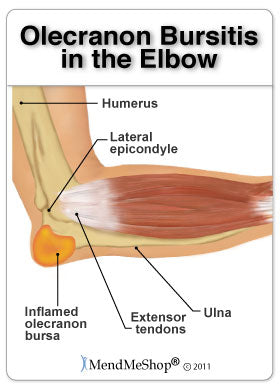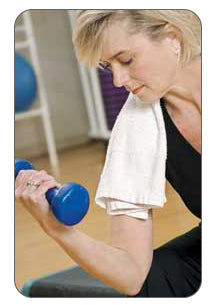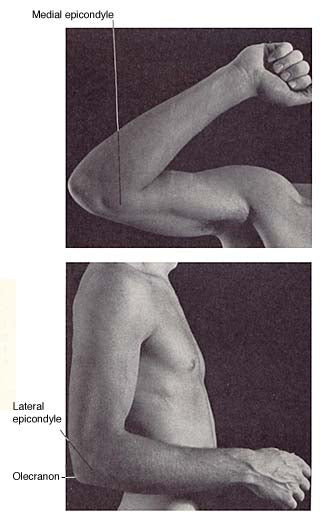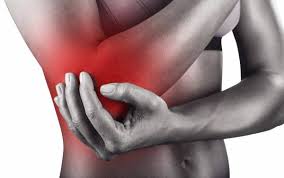Best Golfer’s Elbow Brace
Our elbow is very simple yet so important to the overall use of our whole arm and shoulder. It is a complex system of bones, muscles, nerves and tendons. The elbow joint gives use the ability to lift with strength, climb trees and build our modern world. It is so unique that the joint allows the muscles in the forearm rotate when we twist our wrist. The tissue is strength yet delicate at the same time.
Golfers elbow which is also known and medial epicondylitis is a condition associated with pain on the inner side of your elbow. It is common for this pain to spread to your forearms and wrists. Golfer’s elbow is similar to tennis elbow but on the opposite side of the elbow. It is not limited to golf players though, it is also commonly found in tennis players and in people who repeatedly use their wrist or clench their fingers repeatedly.
You might be suffering from a golfers elbow if:
![]()
You have sharp pain on the inner side of your elbow.
You have swelling and tenderness on the inner side of your elbow, especially after doing any activity.
You feel weakness in your elbow.
You're suffering from pain on the inner part of your elbow with activities like picking up objects with your palm down, flexing your wrist and fingers forward or rest your forearms on a surface.
If you are experiencing any of those symptoms or you're suffering from on-going pain on the inner part of your elbow then you might have a golfers elbow injury.
Professional athletes have had access to state of the art treatment therapies for years that allow them to heal more quickly and completely than you or I. This is why athletes that have a serious golfer elbow injury can often get back in the game in a matter of weeks while you could suffer for months or even years (in chronic cases).
If you are consistently experiencing pain when swinging a golf club, pitching a ball, shaking hands, or turning a doorknob you may be suffering from Golfers elbow. The pain associated with this condition is manageable though! With the right rest, treatment and brace you can be back on the course, pain free in no time.
With some breakthrough products we have engineered, professional treatment is now available to anyone who needs it.
The most amazing thing about a golfers elbow is that your body is capable of healing itself.
It uses your blood supply to do this. Even if you don't receive enough blood flow to the location of your elbow injury, you can still treat yourself in a way that gives your natural blood flow the boost it needs to reach further into your elbow tissue. Your elbow is a delicate balance of tissue and bone receiving a minimal blood flow to the area. Consistent use of your arm and elbow progresses the small micro-tears to not heal correctly and turning the condition chronic quite quickly in some cases.
What is Golfer’s Elbow?
Golfers elbow is a condition mainly associated with pain on the inner side of your elbow when your palms are facing forward. The pain is caused from damage to the muscles and tendons that attach to the medial epicondyle of your elbow. The medial epicondyle is the bony bump that is located on the inner side of your elbow and is one area where your forearm is anchored to your elbow. Repetitive stress that comes from activities involving forceful wrist action or gripping is the most common way to injure these muscles and tendons.
Do You Really have Golfers Elbow ?
Visiting your doctor when you have elbow pain is always recommended, as there are many possible issues that can happen within the arm and elbow. Sometimes, one set of symptoms can result in multiple diagnoses.
Infection (Septic Bursitis). The closer the bursa is to the surface of the skin, the more likely the chance of infection from specific bacteria that are commonly found on the surface of the skin. This bacterial infection is known as septic bursitis and it is caused by the Staphylococcus Epidermis (or Staphylococcus Aureus) bacteria. Septic Bursitis occurs most commonly in men (85% of all cases occur in men) and you are at higher risk of contracting this if you:
have Diabetes
have recently experienced trauma
are undergoing steroid treatments
have a certain kidney condition
Elbow pain can be caused by bursa pain, or golfers elbow.

Crystal Deposits. Some people with diseases such as rheumatoid arthritis, gout or scleroderma may contract bursitis from crystalline deposits in the joints. Although not much is known about how this process happens, it is common knowledge that Uric acid is a normal byproduct of daily metabolism. If your are diagnosed with gout then you are unable to break down this uric acid properly, leading to crystallization of this excess acid which deposits in joints, a painful symptom that can often lead to bursitis.
Tennis Elbow Tendonitis. (lateral epicondylitis). Cases pain, swelling and inflammation will be felt around the bony part of the elbow. With tennis elbow, pain will be felt on the outside of the elbow. The tendons attached to the bone at your elbow are connected to muscles in your forearm, which is why these injuries will sometimes cause pain in your forearm. These injuries are usually caused by racquet sports, golf and overuse from gardening and repetitive movements of your hand or wrist .
What causes Golfers Elbow?

lifting too much weight with your arm can cause tendinitis
Golfers Elbow is commonly caused from the overuse of the tendons and muscles located in your forearm (brachialis, brachioradialis, pronator teres and flexor carpi radialis). The group of muscle and tendons in your arm and elbow help to close (pronate) your wrist and fingers. The wear and tear on these tendons is a result of small tears in your tissue that don't heal properly.
Anyone can suffer from golfers elbow, a job that has you using your hands, wrists and fingers doing a repetitive action, increases the stress on the tissue. Jobs may include; mechanic, lab technicians, hygienists, plaster, painter, pitcher, gardener or carpenter. Sporting activities include; video games, baseball, tennis, racketball and bowling.
It is most often a result of forceful contractions and overuse, such as pushing down while using a screwdriver. Vigorous use and movements or overstraining of the forearm muscles that move your fingers, hand, wrist and forearm. The tendons and muscles are pushed and pulled with such forces that tiny tears form in the tissue and scar tissue and/or calcium deposits form. The growth of scar tissue will put pressure on your soft tissue and nerves, and interrupt the blood flow to this area; this can be very painful
If golfers elbow pain is due to a deterioration of the tendon (tendinopathy), it can take from two to six months to fully recover. Many cases of golfers elbow become chronic problems that progressively get worse if sufferer continues performing the causal activity that started the condition in the first place. When you do this, your body telling you there is a problem as the area will continue to generate a lot of pain.
How Do I Diagnose Golfer's Elbow?
The best way to diagnose this condition is with a quick visit to the your doctor for a physical examination of your elbow, arm and wrist. The doctor will be looking for tenderness on the inside of your arm.

Range of motion movements / tests, will be done to see how much movement has been lost in the elbow and arm. Your elbow might hurt from the doctor poking and prodding at it, but by doing this the doctor will know for sure the source of your pain, the level of tenderness in and around your elbow and how well your elbow can move with this condition.
Your doctor may also consider any previous elbow injuries or joint stiffness that you may have had in the past. This will help the doctor to determine if you have a more complex injury in your elbow and rule out any other elbow injuries that may be present.
An x-ray of the elbow will provide clarification if you are suffering from a bone related condition such as arthritis, gout or a fracture to any bone in your elbow.
Other tests like a bone scan, MRI (magnetic resonance imaging) or blood tests may be done if an x-ray looks normal or the doctor is unsure whether you have a fracture. These tests will also rule out any infections of the bone or tissue.
Chronic Golfers Elbow: Tendinosis will get worse over time if not dealt with correctly or quickly. The inability to heal the tendinosis will cause it to keep coming back or last months or even years. The main long-term problem associated with golfers elbow is failed healing, not inflammation. If you cannot rest the elbow from the activity that started it in the first place are so it can healing. Then your odds of healing it for good are quite low and the risk of the tissues become very thin, and eventually wear out increases.
Acute elbow tendonitis: An acute injury may be caused from a weekend re-roofing your house or putting a new flowerbed. Most times we push our bodies too much too soon from last of warming-up that area. Repetitive use of the elbow causes small tears in the tissue.
How Can a Golfer’s Elbow Brace Help?

A Golfer’s elbow brace works by applying pressure to the affected muscles and tendons that are causing pain in your elbow. By applying this pressure the brace is able to absorb some of the force that would normally be transmitting down your muscle and into your tendons. Because damage to this area is caused when more force is applied to the healthy tissue then it can absorb, a brace is a great way to help alleviate the joint from excess force.
Which type of brace you choose is up to your own personal preferences and what is more comfortable to you. Golfers elbow braces can be interchangeable with Tennis elbow braces but need to be positioned so that the pressure is being applied to the inner aspect of your forearm.
On top of using an elbow brace there are a few other things you can do to help alleviate the pain associated with Golfer’s elbow. A good warm-up and proper technique are important to avoid further injury or damage to the muscles and tendons. After exercise make sure to rest, ice and elevate your elbow to speed up recovery.
Types of Golfer’s Elbow Brace
The most common type of brace used for those suffering from Golfer’s elbow is a counterforce brace. This type of brace is generally a simple strap that is worn 1-3 inches below the elbow joint and applys pressure to the affected muscles/tendons. The second type of brace is a full-elbow sleeve that includes a strap that tightens around the forearm. This type of brace relieves the pressure on the muscles/tendons/ as well as provides warmth to the elbow joint. By providing warmth it will increase the vascularity of the joint which will then lead to a quicker recovery and decrease pain and swelling.
- Choosing a selection results in a full page refresh.


2 comments
Tony Jensen
Show me the brace for tennis elbow
Tony Jensen
Show me the brace for tennis elbow